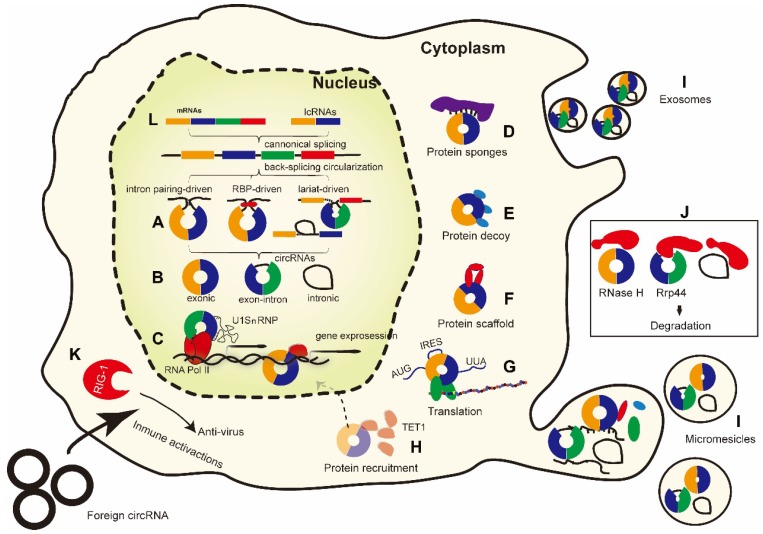Figure 1.
Proteins play an indispensable role in the life cycle of circRNAs from biogenesis to biological function and degradation. (A-B) CircRNAs are formed by back-splicing into three major types of circRNA. (C-H) The functions of circRNAs in interacting with proteins. Several circRNAs have also been reported to encode proteins. (I) CircRNAs may be released from cells into the intracellular environment via exosomes or microvesicles. (J) The degradation of circRNAs mediated by RNase. It is still unclear whether the degradation of circRNAs by RNase happened mainly outside or within the cells. (K) Exogenous circRNAs can activate the RIG-1 cellular immune response pathway. (L) Linear mRNAs and linear non-coding RNAs (lncRNAs) can also be generated from spliceosome-mediated canonical splicing. IRES: internal ribosome entry site. RBPs: RNA-binding proteins. RIG-1: retinoic acid-inducible gene 1 protein. TET1: Tet methylcytosine dioxygenase 1. U1SnRNP: U1 small nuclear ribonucleoprotein.

